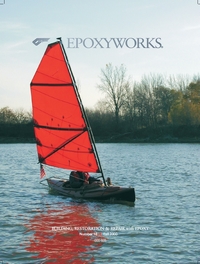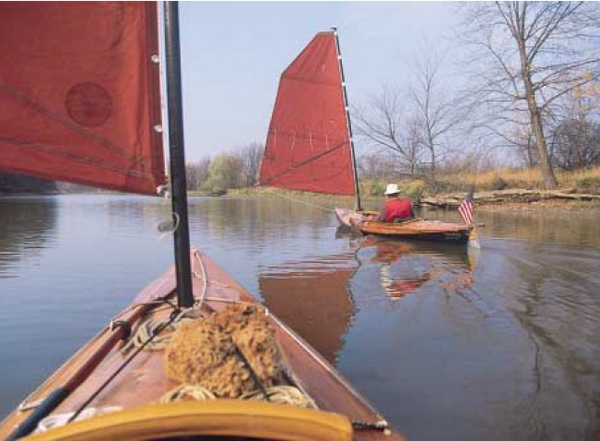
By Meade Gougeon — GBI Founder

As a life long sailor, I have always had some mystical attraction to the canoe. As a young man, I read the exploits of my French Canadian ancestors who plied our beautiful Great Lakes for over two centuries in their birchbark canoes in pursuit of the fur trade. More recently, I followed the adventures of Verlen Kruger as he traveled by kayak from Alaska to South America. I fantasized that someday I could embark on a similar adventure that would follow some of the historical routes of the “voyageurs” on the Great Lakes.
Over the years, I had tried various types of canoes and kayaks and, while I enjoyed the paddling and the healthy exercise it demanded, I quickly discovered that I was never going to be like the voyageurs who could make 60 miles in their 12-14 hour day of paddling. Even with lots of training, 20 miles seemed like a stretch, especially if one had to repeat the feat day after day as Verlen Kruger has done. Many times, I dreamed of some type of small sail that could relieve the drudgery of continuous paddling. I assumed, however, that there was no possibility of a happy marriage between a serious paddling canoe and an efficient sailing craft.
This view changed on August 26, 1998, when I attended a small boat symposium near Saginaw, Michigan. On a small man-made lake next to the expressway, I watched an impressive sailing canoe go through its paces. The wind was light, perhaps 6-8 knots, and this canoe was moving smartly for what seemed an unusually small amount of sail area. What was most intriguing was how well it was performing to weather, easily tacking within 90° to me the measure of a true sailboat. Its other attractive feature was that it wasn’t an open canoe nor a confining kayak, but a decked canoe with an open cockpit and molded seat. It showed comfort and seaworthiness could be mutually compatible goals.
I was impressed: this craft had been carefully conceived to offer the best possible combination of paddling and sailing. I waited on the beach to meet its creator, Hugh Horton, who told me that this canoe was just the latest evolution of a historic movement that started over 130 years ago. For the next several weeks, I could hardly get the concept out of my mind.
I soon traveled down to Horton’s Boat Works, trying to buy his sailing canoe, Puffin. Hugh wasn’t about to sell his beloved Puffin, but he did offer to build me a new sailing canoe which would incorporate his latest thinking in what Hugh calls the 50/50 cruising canoe.
I took delivery of Serendipity last summer. Even on the first sail she proved to be everything I had hoped for. She paddled and sailed beautifully. But the best part was that she was without question the most comfortable boat I had ever been in a greater priority in one’s 60s than in one’s 20s! This was a craft I could enjoy well into my senior years.
Hugh began my education in canoe cruising in the fall of 1999 with a 20 mile trip up the Saginaw River that was more fun than I ever imagined small boat cruising could be. Now I was really hooked and we completed three more cruises on the Saginaw and its tributary rivers before the late fall cold weather set in. This year we followed some of the routes of my voyageur ancestors through the North Channel on the Canadian side of Lake Huron. And I’m dreaming now of an extended voyage in the future that could take us all the way back to Montreal via the old fur trading routes
.





